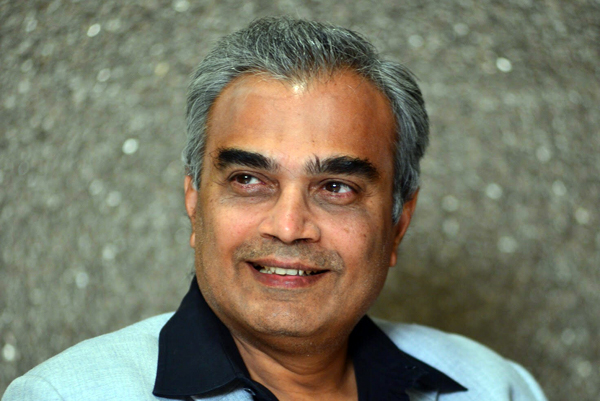Our success rate is on an average above 60 per cent – Dr Rajesh Koradia, Founder & Director, MIRA Hospital & IVF Center
Dr Rajesh Koradia, Founder & Director, MIRA Hospital & IVF Center, speaks to Sanjiv Das about the rise of infertility and how to increase chances of conceiving
There is a steady rise of infertility in India. Why is infertility on the rise in India?
From the overall population, around 15-20 per cent couples face challenges in conceiving. This percentage may be a little higher in the urban areas and a little lower in the rural areas. The reasons for higher instances of infertility in urban areas are stressful and unhealthy lifestyle, being more career oriented, less sexual frequency, tubal problems in females caused due to sexual promiscuity etc. Various vices that are more common nowadays like smoking, drinking, obesity etc. have a negative impact on the fertility in both males and females.
What are the new types of treatment to counter infertility?
There are many new techniques in the field of Infertility treatment, with some of them being more of a marketing gimmick than of actual use. Some of the technologies are more about eliminating the human effort as well as human errors. Some of them being:
IVF Witness System: This system greatly reduces the human error of sample mix up.
Assisted Laser Hatching: This technology helps the embryo to better attach to the womb.
I.M.S.I. : Intracytoplasmic morphologically selected sperm injection (IMSI) is a technique to be better able to assess the structure of the sperm and exclude the sperm with suspected abnormalities from being injected into the available eggs.
P.G.D.: Preimplantation genetic diagnosis (PGD) is a reproductive technology used to increase the potential for a successful pregnancy and delivery. PGD is a genetic test on cells removed from embryos, to help select the best embryo(s) to achieve pregnancy or to avoid a genetic disease for which a couple is at risk.
C.A.S.A.: A sophisticated electronic imaging system to visualise the sperm and an advanced software program to evaluate dozens of individual sperm parameters.
People from which geographies, socio economic are at higher risk of infertility and why?
As discussed before, it has been very widely observed that the people located in the urban geographical areas are more prone to infertility mainly due to the various lifestyle changes, vices, stressful lives etc. that occur at such places. Work life imbalance is more widely prevalent in such urban areas.
What are the treatment methods available at your centre?
We offer all modern treatments for Infertility at MIRA IVF. We have all facilities of a laminar flow, Class 1000 AHU as well as the clean room environment. Sometimes some endoscopic procedure may be required as a part of the treatment for infertility. To cater to this, a state of the art endoscopic OT with imported high end equipment has been incorporated in MIRA IVF for a long time. All endoscopic surgeries are also undertaken by me personally and we are not dependent on any visiting surgeon. Thus we act as a one stop solution for all aspects of infertility treatment. One of the key USP of our IVF Centre is our success rate. According to the MCI guidelines we cannot claim a success rate higher than the statistical average. However, let me share with you that our success rate is on an average above 60 per cent. This figure is open for anyone to come and verify from our records. Second is the trust our patients have in us. We never share any kind of genetic material without the patient’s consent because our focus is not to increase the success rate artificially, but to work towards our mission of “Childless None” where all intending parents should get the joy of parenthood. Further to that mission, expenditure for IVF at MIRA IVF is probably the least in all of India. And for patients who cannot even afford the charges, we offer further discounts, payment facilities, installments etc. Non affording patients at MIRA IVF are offered an option of paying just for the injections every cycle and we collect our charges when the patient has conceived. Such is the confidence we have on our results. Personal attention to each and every patient is something which we deliver. Each and every patient is counselled by me personally. The protocols to be followed, stimulation schedule etc. is all decided by me for each and every patient of MIRA IVF. Embryological procedures are taken care of by my daughter Arwa Koradia who is an excellent embryologist. Thus as a team, we work as a two point contact for the patients. Patients can directly contact her for any embryological aspect query and me for any clinical aspect query. This accessibility to us provides a continuous updation and support to our patients.
Do you have any expansion plans? What type of investments are you looking at in the next five years?
We wish to start Community IVF Centres in various parts of the country in association with the local Gynaecologists who want to start an IVF centre but are too busy with their Obstetric and Gynaecological work or are worried about delivering results. In this Community IVF centre, we wish to take them as partners. They can bring their patient, learn and then later on start practising themselves. By using a shared IVF lab, the cost of IVF also reduces significantly, thus benefiting the patients too. By these Community IVF Centres, we want to reach out to as many infertile couples as possible by bringing the cost of IVF further down and make it even more affordable.
sanjiv.das@expressindia.com
- Advertisement -



Comments are closed.